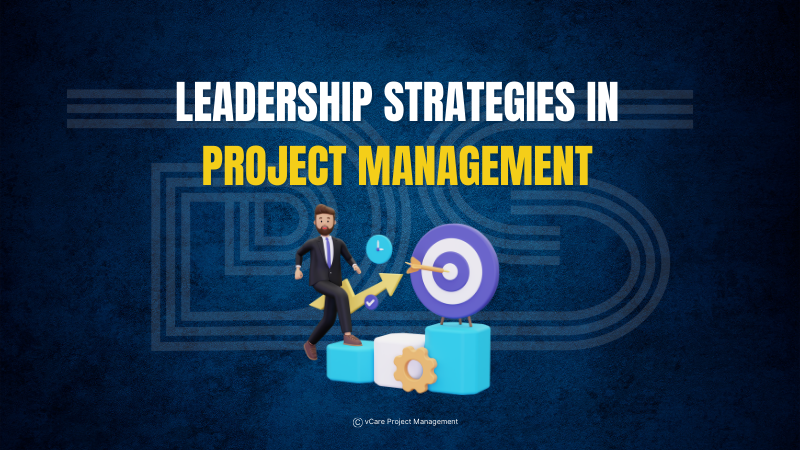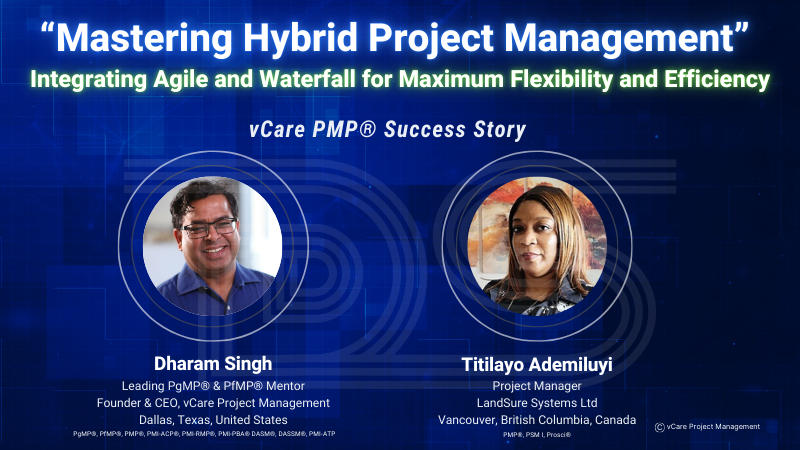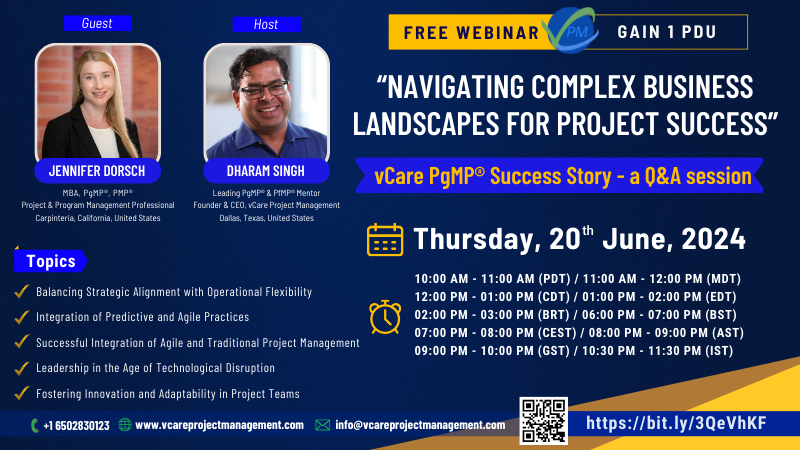
Leadership Strategies in Project Management | PMBOK 7th Edition | vCare | PMI-ATP

Master leadership strategies in project management with insights from PMBOK 7th Edition.


Master leadership strategies in project management with insights from PMBOK 7th Edition.




Navigating Complex Business Landscapes for Project Success | Jennifer Dorsch | 1 PDU | vCare PgMP Success Story
Join me for an upcoming webinar featuring Jennifer Dorsch MBA, PgMP, PMP , a celebrated figure in Business Engineering, Project, and Program Management, who has carved a remarkable career across diverse industries, including specialty chemicals, electronics, medical devices, and pharmaceuticals. Her expertise in these areas, particularly her recent success in passing her PgMP® exam, is highly relevant to senior professionals in Project, Program, and Portfolio Management.
This webinar will cover, among many, the below topics:
+ Balancing Strategic Alignment with Operational Flexibility
+ Integration of Predictive and Agile Practices
+ Successful Integration of Agile and Traditional Project Management
+ Leadership in the Age of Technological Disruption
+ Fostering Innovation and Adaptability in Project Teams
🔗 Reserve your spot now: https://bit.ly/3QeVhKF
Session Date & Time: Thursday, 20th June, 2024
10:00 AM – 11:00 AM (PDT) / 11:00 AM – 12:00 PM (MDT) / 12:00 PM – 01:00 PM (CDT) / 01:00 PM – 02:00 PM (EDT) / 02:00 PM – 03:00 PM (BRT) / 06:00 PM – 07:00 PM (BST) / 07:00 PM – 08:00 PM (CEST) / 08:00 PM – 09: 00 PM (AST) / 09:00 PM – 10:00 PM (GST) / 10:30 PM – 11:30 PM (IST)
By attending this webinar, you can expect to gain from Jennifer Dorsch’s extensive experience, earn 1 PDU, and acquire valuable industry, career, and certification wisdom.
🚀 Elevate Your Project Management Career:
– Book an obligation-free consultation session on Project Management Career, training, and certifications: http://talktodharam.com
– Discover training offers and certification discounts: https://bit.ly/3jWVepD
– Stay updated with our Q&A series and certification success stories by subscribing to the vCare Project Management YouTube channel at https://bit.ly/2YF0wJl
– Follow my podcasts and interviews with Project Management Experts on YouTube at https://bit.ly/2NDY8wd
#ProjectSuccess #BusinessEngineering #ProgramManagement #PgMP #VCarePgMP #PgMPCertification #PgMPExam #StrategicAlignment #OperationalFlexibility #PredictiveAgile #AgileManagement #TechnologicalDisruption #InnovationLeadership #ProjectManagement #PortfolioManagement #ProgramManager #ProjectManager #PortfolioManager #AskDharam #DharamSingh #DharamSinghPgMP #VCareProjectManagement
Leadership plays a crucial role in the success of a project. In Project Management, effective leadership is essential for achieving positive outcomes. The PMBOK 7th Edition highlights various strategies that can improve leadership skills within a project team. Emphasizing skills such as focusing on agreed-upon goals, articulating motivating visions, and fostering collaboration is vital for overcoming obstacles and driving progress. From conflict resolution to promoting self-awareness, every aspect of leadership contributes to a cohesive team and project success.